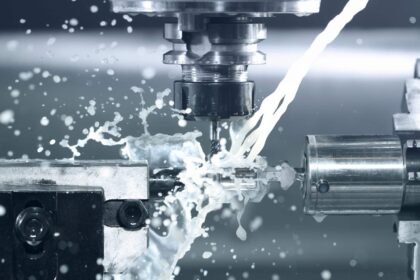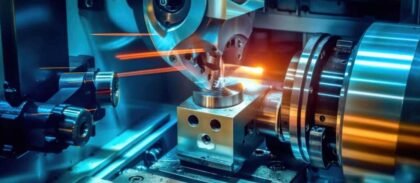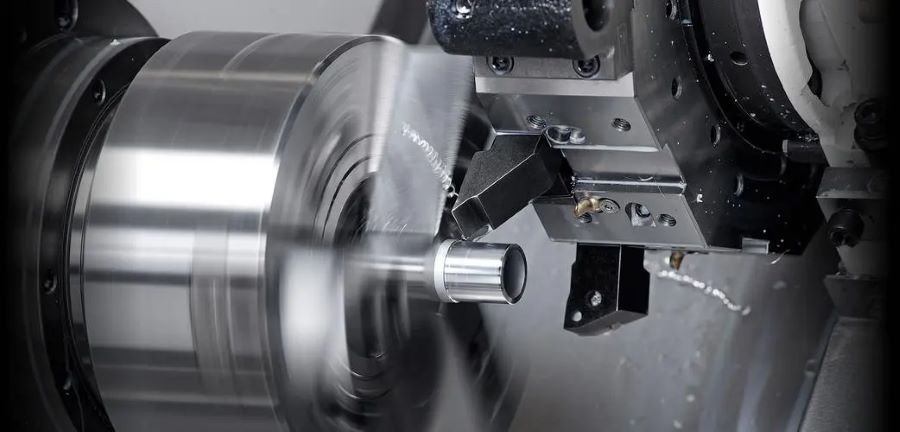Introduction
Swiss turning technology is a modern manufacturing method that creates highly accurate and detailed parts. It is widely used in industries like aerospace, medical devices, and automotive manufacturing. We will explore what Swiss turning is, how it works, its benefits, and why it is an essential technology today.
What Is Swiss Turning?
Swiss turning is a type of precision machining. It uses a machine called a Swiss lathe or Swiss screw machine. This machine can produce tiny, detailed, and complex parts with incredible accuracy. These machines are named after their origin in Switzerland, where they were first invented to make small watch components.
The main feature of a Swiss lathe is its guide bushing. This bushing holds the material steady as it moves. Unlike traditional lathes, where the material moves back and forth, the Swiss lathe allows the cutting tool to work close to the support point. This reduces vibrations and ensures higher precision.
How Does Swiss Turning Work?
Swiss turning machines work by feeding a bar of material through a guide bushing. The cutting tool shapes the material into the desired form. The guide bushing keeps the material stable, which helps achieve tight tolerances.
Here are the basic steps:
Material Loading: A bar of raw material, like metal or plastic, is loaded into the machine.
Guide Bushing: The bar passes through the guide bushing for support.
Cutting: The cutting tools move along the material, shaping it into the required part.
Ejection: Once the part is complete, the machine ejects it, and the process repeats.
Swiss lathes can work on multiple parts at the same time, which increases productivity.

Benefits of Swiss Turning Technology
Swiss turning offers many benefits. These advantages make it the preferred choice for industries that need high precision and efficiency.
High Accuracy: Swiss turning machines can produce parts with extremely tight tolerances. This level of accuracy is essential for industries like medical devices, where even tiny errors can cause problems.
Efficiency: These machines are fast. They can produce large quantities of parts in a short time. Because they work on multiple parts simultaneously, they save time and labor costs.
Versatility: Swiss lathes can handle many types of materials, such as steel, aluminum, titanium, and plastics. They can also create parts of different sizes and shapes, from simple to highly complex designs.
Reduced Waste: Precision machining means less material is wasted. This makes Swiss turning more cost-effective and environmentally friendly.
Durability of Machines: Swiss lathes are built to last. They require minimal maintenance and can work for long hours without losing performance.
Applications of Swiss Turning
Swiss turning is used in many industries. Some of the most common applications include:
Medical Devices
- Swiss lathes make surgical instruments, dental implants, and orthopedic screws.
- These parts need to be small and precise.
Aerospace
- Aerospace components often have intricate designs.
- Swiss turning ensures these parts meet strict quality standards.
Automotive
- Swiss Precision Machining is used to produce parts like fuel injectors and sensor components.
- These parts require high durability and precision.
Electronics
- Small connectors and pins in electronic devices are often made using Swiss turning.
Watchmaking
- The technology’s origins lie in watchmaking.
- It is still used to create the tiny gears and springs inside watches.
Why Swiss Turning Is Essential Today
Modern industries demand high precision and efficiency. Swiss turning meets these demands perfectly. Here are some reasons why this technology is crucial today:
Growing Need for Miniature Parts: As devices get smaller, the demand for tiny, precise components increases. Swiss turning machines are ideal for making these parts.
Improved Quality Standards: Industries like aerospace and medical devices require flawless components. Swiss turning ensures these high standards are met.
Cost-Effectiveness: By reducing waste and increasing production speed, Swiss turning saves money for manufacturers.
Technological Advancements: Modern Swiss lathes come with advanced features, like computer numerical control (CNC). These features make the machines even more accurate and easy to use.

Tips for Choosing a Swiss Turning Machine
If you are considering investing in a Swiss turning machine, here are some tips:
Understand Your Needs
- What types of parts will you make?
- What materials will you use?
Look for CNC Capabilities
- CNC Swiss lathes are easier to program and more efficient.
Check the Machine Size
- Choose a machine that fits your workspace.
Consider the Brand
- Trusted brands often provide better quality and support.
Evaluate Cost and ROI
- Ensure the machine fits your budget and offers a good return on investment.
Future of Swiss Turning Technology
The future of Swiss turning looks promising. With advancements in automation and AI, these machines will become even smarter. They may offer:
- Faster production speeds.
- Higher accuracy.
- Better integration with other manufacturing processes.
Swiss-turning technology will play a key role in shaping the future as industries continue to innovate.
Conclusion
Swiss turning technology combines accuracy and efficiency to deliver outstanding results. Its ability to produce precise, complex parts quickly makes it an invaluable tool in modern manufacturing. From medical devices to aerospace components, Swiss turning supports many industries. By investing in this technology, businesses can succeed in today’s competitive market.
If you found this article insightful and would like to learn more about Swiss turning technology or discuss its applications further, connect with me on LinkedIn. Let’s explore how precision machining can transform your manufacturing processes and drive success in your industry.
